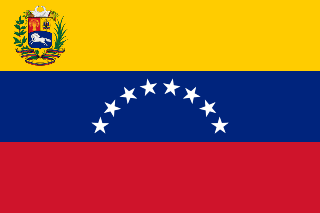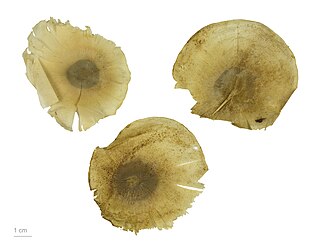| Stelestylis | |
|---|---|
 | |
| Stelestylis surinamensis | |
| Scientific classification | |
| Kingdom: | Plantae |
| Clade: | Angiosperms |
| Clade: | Monocots |
| Order: | Pandanales |
| Family: | Cyclanthaceae |
| Genus: | Stelestylis Drude |
| Type species | |
| Stelestylis coriacea Drude | |
Stelestylis is a genus of plants first described as a genus in 1881. All the known species are native to northern South America (Venezuela and the Guianas). [1]

South America is a continent in the Western Hemisphere, mostly in the Southern Hemisphere, with a relatively small portion in the Northern Hemisphere. It may also be considered a subcontinent of the Americas, which is how it is viewed in the Spanish and Portuguese-speaking regions of the Americas. The reference to South America instead of other regions has increased in the last decades due to changing geopolitical dynamics.

Venezuela, officially the Bolivarian Republic of Venezuela, is a country on the northern coast of South America, consisting of a continental landmass and a large number of small islands and islets in the Caribbean Sea. The capital and largest urban agglomeration is the city of Caracas. It has a territorial extension of 916,445 km2. The continental territory is bordered on the north by the Caribbean Sea and the Atlantic Ocean, on the west by Colombia, Brazil on the south, Trinidad and Tobago to the north-east and on the east by Guyana. The Venezuelan government maintains a claim against Guyana to Guayana Esequiba, an area of 159,542 km2. For its maritime areas, Venezuela exercises sovereignty over 71,295 km2 of territorial waters, 22,224 km2 in its contiguous zone, 471,507 km2 of the Caribbean Sea and the Atlantic Ocean under the concept of exclusive economic zone, and 99,889 km2 of continental shelf. This marine area borders those of 13 states. The country has extremely high biodiversity and is ranked seventh in the world's list of nations with the most number of species. There are habitats ranging from the Andes Mountains in the west to the Amazon basin rain-forest in the south via extensive llanos plains, the Caribbean coast and the Orinoco River Delta in the east.
- Species [1]
- Stelestylis anomala Harling - Aragua + Carabobo States in Venezuela
- Stelestylis coriacea Drude - probably Brazil; original type destroyed in Second World War, precise location locale unknown
- Stelestylis stylaris (Gleason) Harling - Venezuela, Guyana
- Stelestylis surinamensis Harling - Suriname, French Guiana












